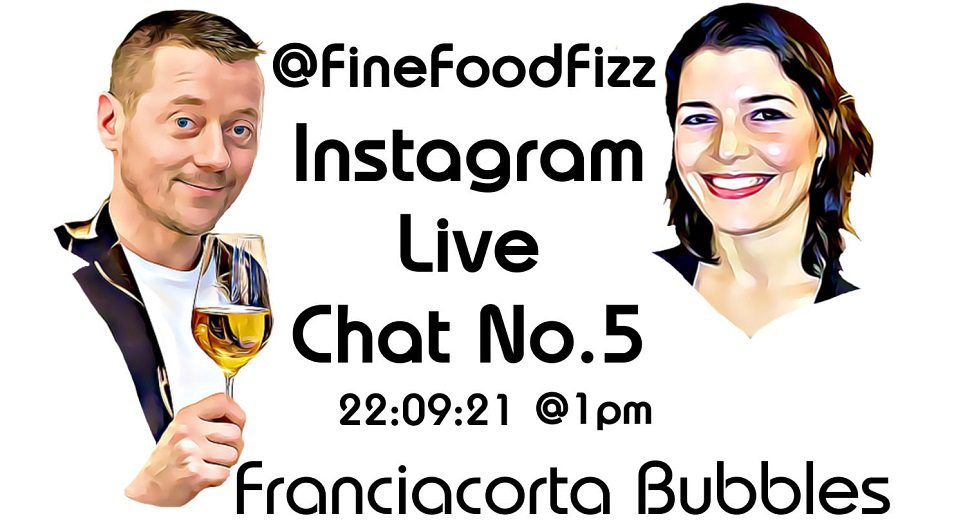Stefania & Christopher Episode 5: Franciacorta
28th September 2021

The lake breeze blowing, the leaves rustling, the alternation of dark and light colors. Wineries hidden by soft lights release vivacious bubbles to gladden hearts: welcome to Franciacorta!
If you are seeking an Italian fizz to brighten your mood, then Franciacorta would satisfy your highest expectations: sparkling like diamonds, charismatic and lively will dazzle you with its unique appeal.
The cultivation of vines has ancient origins on the hills of Franciacorta, as evidenced by the findings of prehistoric grape seed and the writings of classical authors such as Pliny and Virgil.
The area known as Franciacorta lies in the heart of Lombardy bordering Lake Iseo. It’s approximately 200 square kilometres and includes 19 municipalities in the province of Brescia.
The morainic origin of this area gives the soil an extraordinarily rich mineral content that, along with the variety of its components, determines the key factors for high quality viticulture, which can be fully appreciated in the sensorial aspects of every Franciacorta.
Alongside the production of Franciacorta DOCG in different varieties such as Rosè, Millesimato and Riserva this land provides an exclusive sparkling wine called Franciacorta Satèn made from a blend of Chardonnay and Pinot blanc up to a maximum of 50%
History
Vine cultivation has been a constant in Franciacorta area, where grapes were grown from Roman times to late antiquity and the Middle Ages, thanks to its favourable climatic and soil conditions. Though it experienced good and bad periods alike, viticulture in these lands never stopped.
The history of Franciacorta is strongly tied the presence of large monastic institutions. Even before the year 1000, they had large estates and carried out large-scale work, clearing, reclaiming and cultivating the land.
The first document to mention property located in Franciacorta, which belonged to the monastery of San Salvatore in Brescia, dates from the year 766. It is the diploma by which Adelchi, son of Desiderius, donated all the goods he had inherited from his grandfather Verissimo and his uncles Donnolo and Adelchi to the monastery, including some assets from this area.
Grapes
The grapes used for making Franciacorta DOCG are primarily of the Chardonnay variety, a very highly valued white-skinned variety, has been grown in Franciacorta for several decades and currently covers over 2300 hectars of vineyards, which corresponds to approximately 80% of the total area. Pinot noir, is the second most widespread vine in Franciacorta and occupies about 15% of the total area. Pinot blanc, is the third most popular vine in Franciacorta, it is of French origin and belongs to the large family of Pinot. It now occupies about 5% of the total area.
Franciacorta DOCG live tasting
View this post on Instagram
Mirabella Brut Satèn Franciacorta
Delicate and brilliant with lively perlage. Fruity character with notes of exotic fruits, pineapple and touch of hazelnut. Pleasant freshness, zesty, soft and well-balanced.
Castello Bonomi Franciacorta Dosage Zero Millesimato 2011
Pinot Nero 50% and Chardonnay 50%
Straw deep yellow colour with a lively mousse. Notes of citrus and vanilla, intense notes of pastry, bread crust and almond.
On the palate, it is round and full, mellow and dry.
La Montina Franciacorta Rosè Extra Brut
Pinot Nero 85% and Chardonnay 15%
Pink brillant colour, vibrant and long-lasting perlage. Toasty character, hints of berries and ripe fruit, on the palate it is mellow, crisp with a good body.
Franciacorta DOCG food pairing
It is the perferct fizz suitable for any important occasions: from an aperitif to main dishes, from the simplest meal to the most complex. I would suggest the following food pairing wih each of these Franciacorta DOCG due to its content of sugar.
Satèn Brut: utterly divine if paired with raw fish, lobster and crab cakes, or more complex dishes such as rigatoni with sea urchin or second dishes like scallops with purple potatoes and almonds.
Pas dosè: pike salad with fresh fennel, fish dishes like pasta with clams and pachino tomatoes, second dishes such as monkfish with pistachio, hazelnuts and capers.
Rosè Extra Brut: perfect with risotto with prawns, spaghetti with red mullet and wild fennel, tuna tartare. Roast chicken with crisp vegetables, spiny lobster alla catalana.
Find Stefania Ruffo on Instagram:
![]()
Stefania Ruffo
Wine Writer at Glass of Bubbly, and Storyteller. Find me on Instagram - @stefania.wine
